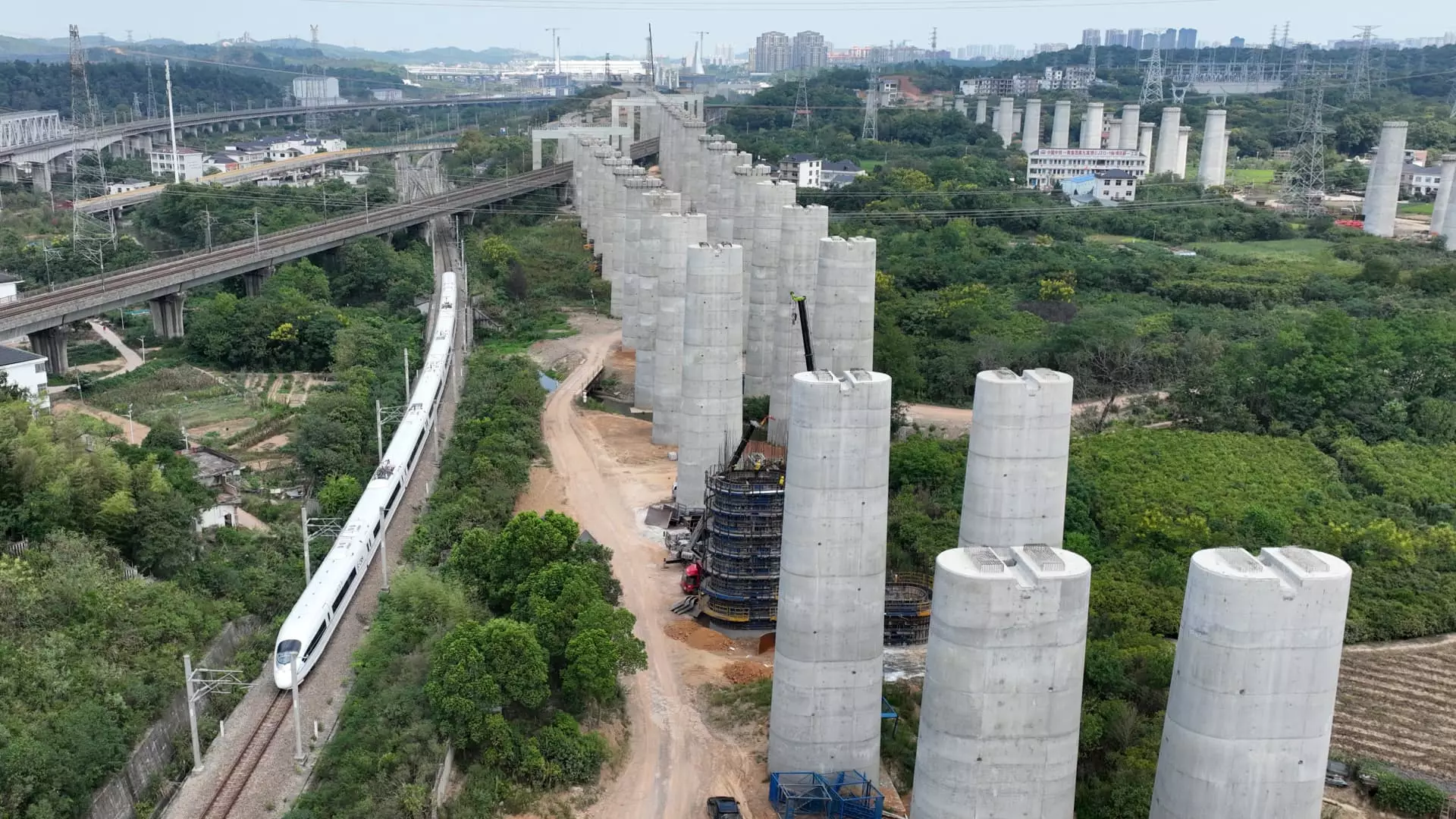China’s economic landscape is currently illustrating a conundrum where its once-booming real estate sector now serves as a harbinger of financial uncertainty. As local governments grapple with the ramifications of a housing market slump and dwindling revenue streams, the interconnectedness of real estate and government finances becomes glaringly evident. This article dissects the critical elements contributing to the ongoing consumption slowdown in China and the resulting implications for local governance and business confidence.
In the last two decades, the bulk of household wealth in China was funneled into real estate, underpinned by substantial investment potential and rising property values. However, the Chinese government’s regulatory measures aimed at curbing the rampant debt accumulation among property developers have triggered a market downturn. Since Beijing initiated a crackdown in 2020, the crash has rippled through local economies, rendering the real estate sector devoid of its previous revenue-generating capacity. Properties that were once seen as reliable assets are now depreciating, prompting developers to limit land acquisitions significantly.
As local governments derive a considerable portion of their revenue from land sales and taxation, this contraction signals a broader fiscal crisis. Analysts at S&P Global Ratings suggest that recovery for local government finances could take between three to five years, indicating a protracted period of uncertainty for fiscal health at the municipal level. The direct consequence of this decline is an acute reduction in funding for essential public services and developmental initiatives.
Wenyin Huang, an S&P analyst, expresses concerns about the dual pressures faced by local governments. The combination of stalling land sales and a taxation framework that has seen substantial cuts since 2018 has crippled operating revenues by an average of 10% nationwide. As local authorities attempt to bolster revenue generation amid adverse economic conditions, businesses, already feeling the pinch, are increasingly reluctant to invest in hiring or wage increases. This hesitation contributes to a pervasive consumer skepticism regarding future earnings, thereby further stifling the consumption that is crucial for economic rebound.
Moreover, local governments have begun to pursue tax collections from years past in a desperate bid to recover lost revenue. Numerous companies have reported receiving notices demanding repayments linked to tax discrepancies dating back to as early as 1994. This backward-looking fiscal scrutiny is not just a troubling sign of local governance desperation but also throws businesses into a state of apprehension, preventing them from operating with confidence.
While there are signs of varying performance in local tax revenue, particularly in provinces like Zhejiang and Jiangsu, the overall prospects remain grim. Local governments are rethinking revenue strategies and attempting to diversify income sources amidst the challenges tied to their major fiscal lifelines. However, these moves often come across as measures of last resort rather than long-term solutions.
Analyzing the broader economic implications, the shift away from an investment-driven narrative toward one focused on consumption has proven difficult. The need for growth remains paramount, but entrenched policies and long-standing dependencies on debt-driven investments complicate such transitions. Morgan Stanley’s economists have articulated the adverse effects of these counterproductive policies, noting that the prioritization of extracting economic gains from investments has historically led to increased debt-to-GDP ratios, exacerbating the fiscal dilemma.
Local government financing vehicles (LGFVs) represent another critical layer in this intricately woven economic fabric. These entities have accumulated vast amounts of debt to finance infrastructural projects that frequently yield minimal financial returns. As they become more pronounced as a danger to banking stability, risks associated with LGFVs are drawing attention as significant and often underappreciated. With banks facing mounting exposure to LGFV loans, the potential for systemic financial disruption looms larger.
As the government grapples with liquidity issues affecting LGFVs, S&P warns of the challenges that lie ahead in addressing local government debt while ensuring overall stability in China’s financial system. Simplistic fiscal measures across the board may not suffice in the face of such deep-seated financial issues.
The intertwining of China’s real estate troubles with local government finances creates a multifaceted crisis that extends far beyond mere economic statistics. With faltering consumer confidence and reluctant businesses faced with increasing fiscal demands, the road to recovery remains fraught with challenges. As the years unfold, all eyes will be on how local authorities manage this delicate situation and whether they can pivot effectively from a debt-driven model toward a genuinely sustainable economic framework. Time and strategic foresight will be critical in determining the fate of not only local governments but also the broader Chinese economy in the years to come.

